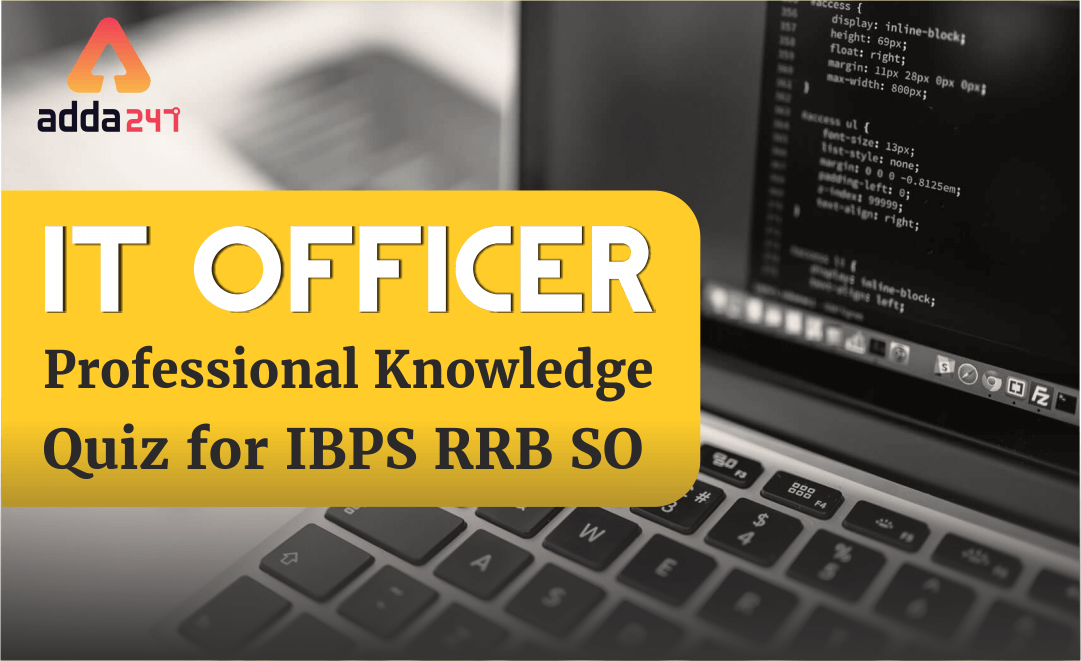IBPS RRB SO IT Officer Scale-II is amongst the most reputed jobs in the Banking Sector. We will provide you with a quiz based on Information Technology which will cover topics like Networking, Information Security, DBMS, Data Structure, Programming, etc. Practice with the questions based on the most updated pattern. We already rolled the study plan for IBPS RRB MAINS 2019.
Q1. Which level of testing is evaluating the software/system compatibly with the business requirements?
(a) Integration testing
(b) System testing
(c) Acceptance testing
(d) Unit Testing
(e) Evaluation Testing
S1. Ans.(c)
Sol. Acceptance testing (or User Acceptance Testing), is conducted to determine whether the system is ready for release. During the Software development life cycle, requirements changes can sometimes be misinterpreted in a fashion that does not meet the intended needs of the users. During this final phase, the user will test the system to find out whether the application meets their business’ needs. Once this process has been completed and the software has passed, the program will then be delivered to production.
Q2. What is UML (Uniform Modeling Language)?
(a) Designing technique
(b) Testing technique
(c) Maintenance technique
(d) Delivery Technique
(e) Debugging Technique
S2. Ans.(a)
Sol. UML is a common language for business analysts, software architects and developers used to describe, specify, design, and document existing or new business processes, structure and behavior of artifacts of software systems. UML can be applied to diverse application domains (e.g., banking, finance, internet, aerospace, healthcare, etc.) It can be used with all major object and component software development methods and for various implementation platforms (e.g., J2EE, .NET).
Q3.Which of the following software development model is also referred as Linear Sequential Model?
(a) Spiral Model
(b) Iterative Model
(c) Waterfall Model
(d) Incremental Model
(e) V-Model
S3. Ans.(c)
Sol. In the waterfall model (also known as the classical life cycle model), the development of software proceeds linearly and sequentially from requirement analysis to design, coding, testing, integration, implementation, and maintenance. Thus, this model is also known as the linear sequential model.
Q4.Which level of DFD is also called Context Diagram?
(a) DFD Level 0
(b) DFD Level 1
(c) DFD Level 2
(d) DFD Level 3
(e) DFD Level 4
S4. Ans.(a)
Sol. DFD Level 0 is also called a Context Diagram. It’s a basic overview of the whole system or process being analyzed or modeled. It’s designed to be an at-a-glance view, showing the system as a single high-level process, with its relationship to external entities. It should be easily understood by a wide audience, including stakeholders, business analysts, data analysts and developers.
Q5.Which of the following algorithm technique is used in the quick sort?
(a) Dynamic algorithm
(b) Back tracking
(c) Divide and Conquer
(d) Greedy algorithm
(e) Traversal method
S5. Ans.(c)
Sol. Quick sort used Divide and Conquer method. In this method divide problem into several smaller sub problems. Conquer the sub problems by solving them recursively. Combine the solutions to get a solution to the sub problems. Divide and Conquer algorithms are normally recursive.
Q6. Which of the following sorting algorithm has the worst time complexity [O(n log(n))]?
(a)Quick sort
(b)Bubble sort
(c)Insertion sort
(d)Heap sort
(e)Radix sort
S6.Ans.(d)
Sol. Heap sort is a comparison based sorting technique based on Binary Heap data structure. It is similar to selection sort where we first find the maximum element and place the maximum element at the end. We repeat the same process for remaining element. The worst time complexity of Heap sort is O[n log n].
Q7. In which phase of compiler design programs are converted into tokens?
(a) Syntax Analyzer
(b) Lexical Analyzer
(c) Semantic Analyzer
(d) Code optimizer
(e) Code Generator
S7.Ans.(b)
Sol. Lexical analysis is the first phase of compiler which is also termed as scanning. Source program is scanned to read the stream of characters and those characters are grouped to form a sequence called lexemes which produces token as output. Token is a sequence of characters that represent lexical unit, which matches with the pattern, such as keywords, operators, identifiers etc. Once a token is generated the corresponding entry is made in the symbol table.
Q8.Which of the following password format is more secure?
(a) Abc123
(b) Keyword
(c) HbGd#
(d) Hgm@22Ds
(e) abcDFRgfs
S8.Ans.(d)
Sol. A good password is made up of a number of different characteristics. For instance, it should be at least 6 – 8 characters long and should include at least two uppercase letters, lowercase letters, Symbols and numbers. As you mentioned, it shouldn’t be obvious. Definitely do not use your children’s names or pet’s names. For that matter, it shouldn’t even be a real word person, place or thing. Use random characters. The more random the sequence of characters, the more secure the password will be.
Q9.IP Address 169.2.7.6 belong to_____
(a) Class A
(b) Class B
(c) Class C
(d) Class D
(e) Class E
S9. Ans.(b)
Sol. Range of Class B IP address 128.0.0.0 to 191.255.255.255
Q10.’REVOKE’ command is used in which category of SQL statement?
(a) DCL
(b) TCL
(c) DML
(d) DDL
(e) None of these
S10.Ans.(a)
Sol. DCL is used to create roles, permissions, and referential integrity as well it is used to control access to database by securing it. These SQL commands are used for providing security to database objects. These commands are GRANT and REVOKE.
GRANT to allow specified users to perform specified tasks.
REVOKE to cancel previously granted or denied permissions.
Q11.The key words-try, catch and finally, are typically used in the sequence in Java is
(a) try, catch, finally
(b) finally, try, catch
(c) catch, try, finally
(d) try, finally, catch
(e) None of these
S11.Ans.(a
Sol. When an exception occurs the execution of the program is transferred to an appropriate exception handler. The try-catch-finally block is used to handle the exception. The code in which the exception may occur is enclosed in a try block, also called as a guarded region. The catch clause matches a specific exception to a block of code which handles that exception. And the cleanup code which needs to be executed no matter the exception occurs or not is put inside the finally block
Q12.What is Aging in operating system?
(a) Keeping track of cache contents
(b) Keeping track of what pages are currently residing in the memory
(c) Keeping track of how many times a given page is referenced
(d) Increasing the priority of jobs to ensure termination in a finite time
(e) None of these
S12.Ans.(d)
Sol. Aging is a scheduling technique used to avoid starvation. It is a technique of gradually increasing the priority of processes that wait in the system for a long time.
Q13.HTML tags are used to describe document ___________.
(a) Content
(b) Definition
(c) Language
(d) Table
(e) Grammar
S13.Ans.(a)
Q14._______ is passed to a method by use of call-by-reference.
(a) Variables
(b) Objects
(c) Methods
(d) Operators
(e) Encapsulation
S14.Ans.(b)
Q15.In Java, each thread has its own ________, in which it runs?
(a) main() method
(b) JVM
(c) Call stack
(d) Memory
(e) Shell
S15.Ans.(c)
Sol. Thread of execution means an individual ‘lightweight’ process that has its own call stack. In java each thread has its own call stack.
Check out more Computer Knowledge Videos Here





 GA Capsule for SBI Clerk Mains 2025, Dow...
GA Capsule for SBI Clerk Mains 2025, Dow...
 The Hindu Review October 2022: Download ...
The Hindu Review October 2022: Download ...
 Test Prime Subscription by Adda247
Test Prime Subscription by Adda247


